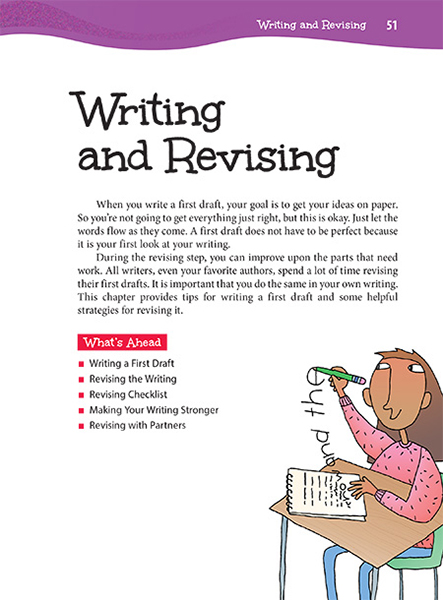Page 051 from

Start-Up Activity
Ask your students if they've ever thought of the perfect come-back—five minutes too late to use it. Wouldn't it be great to go back in time and say the perfectly right thing at the perfectly right moment?
That's what revising is. Revising lets writers take their best thinking from an hour or more and condense it into something that readers can experience in five minutes. Help your students see that revising makes their writing as effective as it can be.
Think About It
“I have rewritten—often several times—every word I have ever published. My pencils outlast their erasers.”
—Vladimir Nabokov

Start-Up Activity
Ask your students if they've ever thought of the perfect come-back—five minutes too late to use it. Wouldn't it be great to go back in time and say the perfectly right thing at the perfectly right moment?
That's what revising is. Revising lets writers take their best thinking from an hour or more and condense it into something that readers can experience in five minutes. Help your students see that revising makes their writing as effective as it can be.
Think About It
“I have rewritten—often several times—every word I have ever published. My pencils outlast their erasers.”
—Vladimir Nabokov


